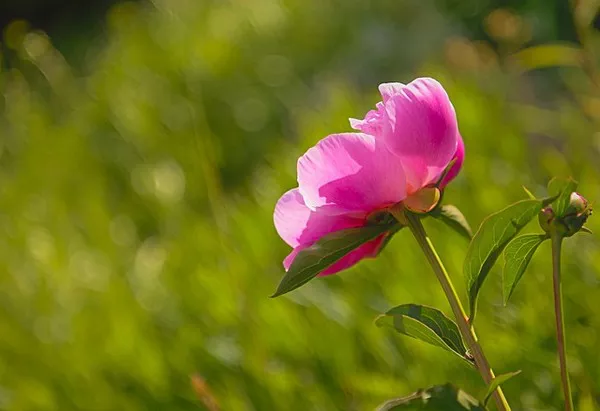In the intricate tapestry of human culture and tradition, few gestures hold as much symbolic weight and emotional resonance as the act of giving flowers. From ancient civilizations to modern society, the exchange of blooms has transcended time and cultural boundaries, serving as a universal language of affection, celebration, consolation, and gratitude. In this article, we delve into the profound psychology and significance that underpin the tradition of giving flowers, shedding light on why this timeless gesture continues to thrive in our contemporary world.
A Symbolic Language of Emotions
At its essence, the act of giving flowers is a form of non-verbal communication, allowing individuals to convey a myriad of emotions without uttering a single word. Whether it’s a bouquet of vibrant roses to express love and passion, a bunch of cheerful daisies to convey joy and happiness, or a cluster of serene lilies to offer sympathy and solace, each bloom carries its own symbolic resonance, capable of articulating sentiments that transcend linguistic barriers.
Moreover, the choice of flowers and their arrangement can further enhance the message being conveyed. For instance, a carefully curated bouquet featuring a harmonious blend of colors and textures can amplify the depth of one’s feelings, while the selection of specific blooms based on their traditional meanings can imbue the gesture with added layers of significance and intentionality.
A Gesture of Love and Romance
Perhaps one of the most iconic associations with giving flowers is its role in expressions of love and romance. Throughout history, flowers have been intertwined with tales of courtship, passion, and undying devotion, serving as powerful symbols of affection and desire.
The timeless tradition of presenting roses, in particular, as tokens of love can be traced back to ancient mythology, where the flower was associated with the goddess of love, Aphrodite. Today, the exchange of roses remains synonymous with romantic gestures, with each color carrying its own nuanced message – from the fiery passion of red roses to the innocent purity of white ones.
Beyond roses, an array of other blooms holds significance in matters of the heart. Delicate tulips symbolize perfect love, while fragrant jasmine represents sensuality and eternal love. By presenting these blossoms to a beloved partner, individuals not only express their affection but also tap into a rich tapestry of cultural symbolism that heightens the emotional impact of the gesture.
Celebration and Joy
In addition to matters of the heart, flowers also play a central role in commemorating milestones and celebrating life’s joyful moments. Whether it’s a birthday, anniversary, graduation, or wedding, the presence of flowers adds an element of beauty and festivity to any occasion.
The vibrant colors and fragrant scents of blooms serve to uplift spirits and create an atmosphere of merriment and cheer. From extravagant floral arrangements adorning banquet tables to delicate posies adorning bridal bouquets, flowers infuse celebrations with a sense of elegance and refinement, making them an indispensable part of festive traditions worldwide.
Moreover, the act of giving flowers in celebration serves as a tangible expression of shared happiness and goodwill. By presenting blooms to mark significant milestones, individuals not only honor the achievements of others but also participate in the collective joy and camaraderie that define these moments.
Expressions of Sympathy and Compassion
While flowers are often associated with joyous occasions, they also hold profound significance in times of sorrow and loss. In the face of grief, flowers serve as gestures of comfort, offering solace and support to those who are mourning the loss of a loved one.
The tradition of sending sympathy flowers dates back centuries, with cultures around the world incorporating blooms into funeral rites and memorial ceremonies. White lilies, in particular, are commonly associated with expressions of sympathy, symbolizing purity, peace, and the promise of renewal.
Beyond their symbolic meanings, flowers provide a tangible source of comfort to grieving individuals, serving as reminders of the beauty and resilience of life even in the darkest of times. The act of receiving flowers from friends and loved ones can offer a glimmer of solace amidst the pain of loss, providing a sense of connection and compassion that transcends words.
Gratitude and Appreciation
In addition to expressing love, celebration, and sympathy, flowers also serve as powerful symbols of gratitude and appreciation. Whether it’s a gesture of thanks for a kind deed, a token of appreciation for a job well done, or a simple expression of gratitude for the presence of someone special in our lives, flowers offer a tangible means of acknowledging the contributions and kindness of others.
The act of giving flowers as a gesture of gratitude not only conveys appreciation but also fosters a sense of reciprocity and mutual respect within relationships. By acknowledging the efforts and sacrifices of others through the gift of flowers, individuals strengthen bonds and cultivate a culture of appreciation that enriches both personal and professional connections.
Moreover, the act of receiving flowers can evoke feelings of validation and affirmation, reaffirming one’s worth and significance in the eyes of others. Whether it’s a single stem or an elaborate arrangement, the gift of flowers serves as a tangible reminder of the impact that individuals have on the lives of those around them.
Conclusion
In a world marked by rapid technological advancements and changing social norms, the tradition of giving flowers endures as a timeless expression of human emotion and connection. From expressions of love and celebration to gestures of sympathy and gratitude, flowers serve as powerful symbols that transcend language and cultural barriers, speaking to the universal longing for beauty, joy, and connection in our lives.
As we continue to navigate the complexities of the modern world, may we never lose sight of the profound significance and beauty inherent in the simple act of giving and receiving flowers—a tradition that serves as a poignant reminder of the enduring power of human connection and compassion.


